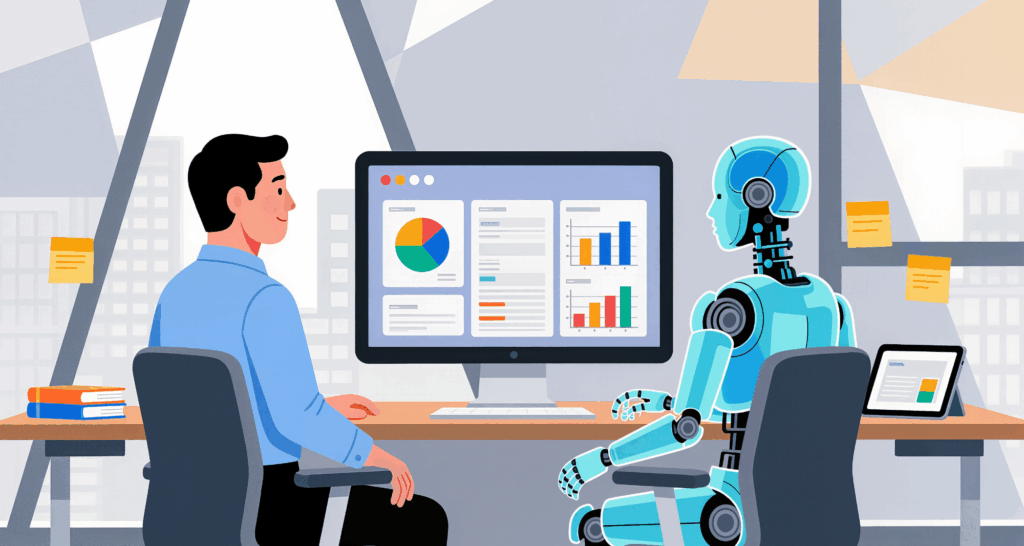5 Smart Ways to Develop an AI-Driven Roadmap
AI is changing how companies innovate, scale, and run. The problem is that, although many businesses are eager to embrace AI, they often struggle to move beyond experimentation to create a strategic, results-driven roadmap.
Think about it—how many businesses invest in AI without a clear plan, hoping it will magically solve their problems? The truth is, without a well-structured roadmap, AI can quickly become a costly distraction rather than a game-changer. Whether you want to automate operations, gain deeper customer insights, or predict future trends, you need a solid framework that aligns AI initiatives with your business goals.
This guide is about practical, actionable steps you can take today to integrate AI into your business in a way that actually delivers value. Let’s explore five smart ways to build an AI-driven roadmap that sets your organization up for long-term success.
Understanding Your Business DNA Before Integrating AI
Before jumping into AI adoption, take a step back and analyze your business DNA. What does that mean? Simply put, you need to understand what drives your business forward—its core strengths, challenges, and opportunities. AI should enhance what you do best, not complicate things.
Start by asking yourself:
- Where do inefficiencies exist in your current processes?
- What are your customers biggest pain points?
- Which business areas generate the most data but lack actionable insights?
Your AI roadmap should be shaped by your unique business needs, not trends. Some companies may find AI most useful in optimizing back-end operations, while others might focus on improving customer experiences. By clearly defining your priorities, you can ensure AI aligns with your goals rather than creating unnecessary complexity.
Once you have a strong grasp of your business DNA, it becomes easier to identify where AI can truly add value—allowing for a more strategic, purpose-driven implementation.
Making AI a Natural Part of Everyday Decision-Making
AI is most effective when it’s integrated smoothly into daily business decisions rather than being treated as a separate initiative. To truly benefit from AI, it needs to become a trusted partner in decision-making at every level of your organization.
Instead of thinking of AI as an isolated project, imagine it as your decision-making assistant—helping your teams make more informed, data-backed choices with confidence. This could include:
- Using AI to analyze sales data and adjust product strategies dynamically.
- Personalizing marketing campaigns based on evolving customer behaviors.
- Optimizing inventory management by predicting demand more accurately.
The goal here is to make AI insights accessible and actionable for your teams. Providing them with the right tools and training ensures they feel empowered to use AI confidently, shifting from intuition-based to data-driven decisions.
Embedding AI into your day-to-day processes will enable faster, smarter, and more agile business operations without overwhelming your workforce with complex technology.
Focusing AI Efforts on Enhancing Customer Experiences
At the heart of any AI-driven roadmap should be your customers. AI should not just help you internally—it should also enrich the way you serve and engage with your audience.
By mapping the customer journey, you can uncover key moments where AI can create meaningful touchpoints, such as:
- Deploying AI-powered chatbots to provide instant, 24/7 support.
- Offering product recommendations that feel personalized and relevant.
- Analyzing customer feedback to determine opportunities for improvement.
AI can offer a deeper understanding of customer behavior, allowing your business to anticipate their needs and deliver personalized experiences at scale. However, personalization isn’t just about knowing what customers want—it’s about building trust by using AI responsibly and transparently.
By ensuring your AI efforts are customer-centric, you’re not only improving satisfaction but also driving loyalty and long-term business growth.
Empowering Your Workforce to Work Alongside AI
AI is powerful, but it works best when paired with human intelligence. Employees need to feel that AI is here to support them, not replace them. A common hurdle businesses face when adopting AI is employee resistance—fears of job displacement and unfamiliarity with AI tools.
To ensure a smooth transition, your AI roadmap should include a strong focus on education and collaboration. Here’s how you can prepare your teams:
- Show them the value: Organize hands-on sessions to demonstrate how AI can simplify their work.
- Encourage experimentation: Give employees the opportunity to test AI solutions and provide input.
- Invest in upskilling: Provide learning programs to help employees build AI-related skills and confidence.
When employees understand that AI is here to complement their expertise, they are more likely to embrace it and become active participants in your AI journey. Empowering them with the right knowledge ensures a collaborative environment where AI and human intelligence work hand in hand.
Keeping AI Initiatives Agile and Scalable
AI is evolving at lightning speed, and businesses that embrace flexibility will gain the most value from it. Your AI roadmap should prioritize agility, ensuring that your strategies can quickly adapt to changes in technology and market demands.
Rather than attempting a company-wide AI overhaul all at once, consider starting small with pilot programs that allow you to test AI solutions in a controlled environment. This approach helps you:
- Automate a single workflow to measure efficiency gains before scaling.
- Introduce AI-powered analytics in one department before a broader rollout.
- Use AI insights to optimize one marketing channel before expanding.
Taking a continuous, test-and-learn approach helps minimize risks and ensures your business stays responsive to emerging AI advancements without overwhelming your teams or resources.
Final Thoughts
Building an AI-driven roadmap isn’t about adopting technology for the sake of it—it’s about using AI to solve real business challenges and unlock opportunities. The businesses that succeed with AI are those that take the time to understand their unique needs, integrate AI into decision-making processes, focus on enhancing customer experiences, empower their workforce, and remain agile in the face of change.
AI has the potential to be your biggest growth enabler—but only if implemented thoughtfully and strategically.
So, are you ready to embrace AI and take your business to the next level? Start small, stay focused, and watch the transformation unfold.




